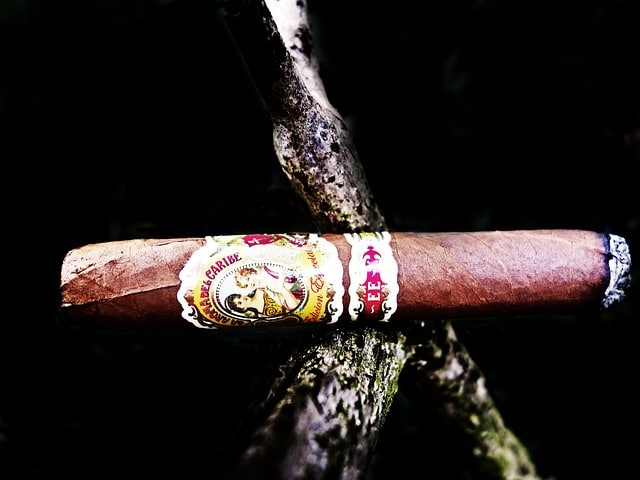The cigar band is the ubiquitous piece of paper that rings the cigar and makes it a lot easier when you reach into your humidor to identify what you are smoking. Yet, shrouded in mystery, Cigar bands have remained the center of debate among cigar aficionados and trophy collectors. So when did the cigar band evolve from a tiny strip of paper to a blaring work of art?
When Did Cigar Bands First Appear?
The stylish look of cigar bands serves an efficient purpose. The rumor was that it began at the behest of Catherine the Great. The band was considered a way to prevent her from getting her fingers dirty while smoking. England supposedly reinforced the notion of cleanliness and bands. However, cigarettes, snuff, and pipe tobacco were far more prevalent – and dirtier.
Cigar Bands Were Calling Cards
The origin of cigar bands was a more practical purpose, solved by a German immigrant to Cuba named Gustave Bock. In the early 1800s, Cuban cigars were top-rated in Europe. However, these trophy cigars cost nearly 15 times the most available cigars made in Germany. Because of the cost disparity, counterfeit Cuban cigars flourished. So Bock, who had his factory, wrapped a paper band around every cigar with his signature. By the mid-1800s, every Cuban factory did the same.
Cigar Bands Get Fancy
The early 1900s saw the rise of cigar band art. Collecting cigar bands became a hobby, with cigar stores proudly displaying ornate albums. They became a prized commodity as they grew more ornate and intricately detailed. Cigar companies created different cigar bands and even offered collected cigar bands in trade-in programs like the old S and H Green Stamps, where you could trade bands for dining ware or furniture. However, once the Great Depression hit, cigars dropped out of favor, as did the elaborate, expensive bands.
History Repeats Itself
When the renewed rise and subsequent mania for Cuban cigars hit in the late 1990s, counterfeit cigars became popular again. Two of the most sought-after brands of cigars, Cohiba and Padron, introduced a unique identification system underneath the bands to prevent copycats. Other companies frequently change the band design to guard against counterfeiting. As the competition for shelf space in cigar stores heated up, larger, more ornate bands have become the norm. Gorgeous designs on cigars like Fuente’s Opus X or La Sirena’s Ocean serve as their billboards.
Leave the Band On, or Take It Off?
The band has become almost the entire cigar on some cigars! In some lounges, folks like to keep the band on to advertise (show off) what they are smoking. It is always best to remove the band when you light them. It shouldn’t affect the taste, but it can affect how they burn — especially on the more prominent labels. Be careful removing the band so you don’t tear the wrapper. Usually, it’s best to light the cigar and let it heat up. That should loosen the glue and allow it to peel off much easier. The cigar band is the easiest way of identifying your prized smokes in your humidor. Just don’t use them as the sole methodology for buying new cigars!
Photo credit: Pixabay | GPC33


